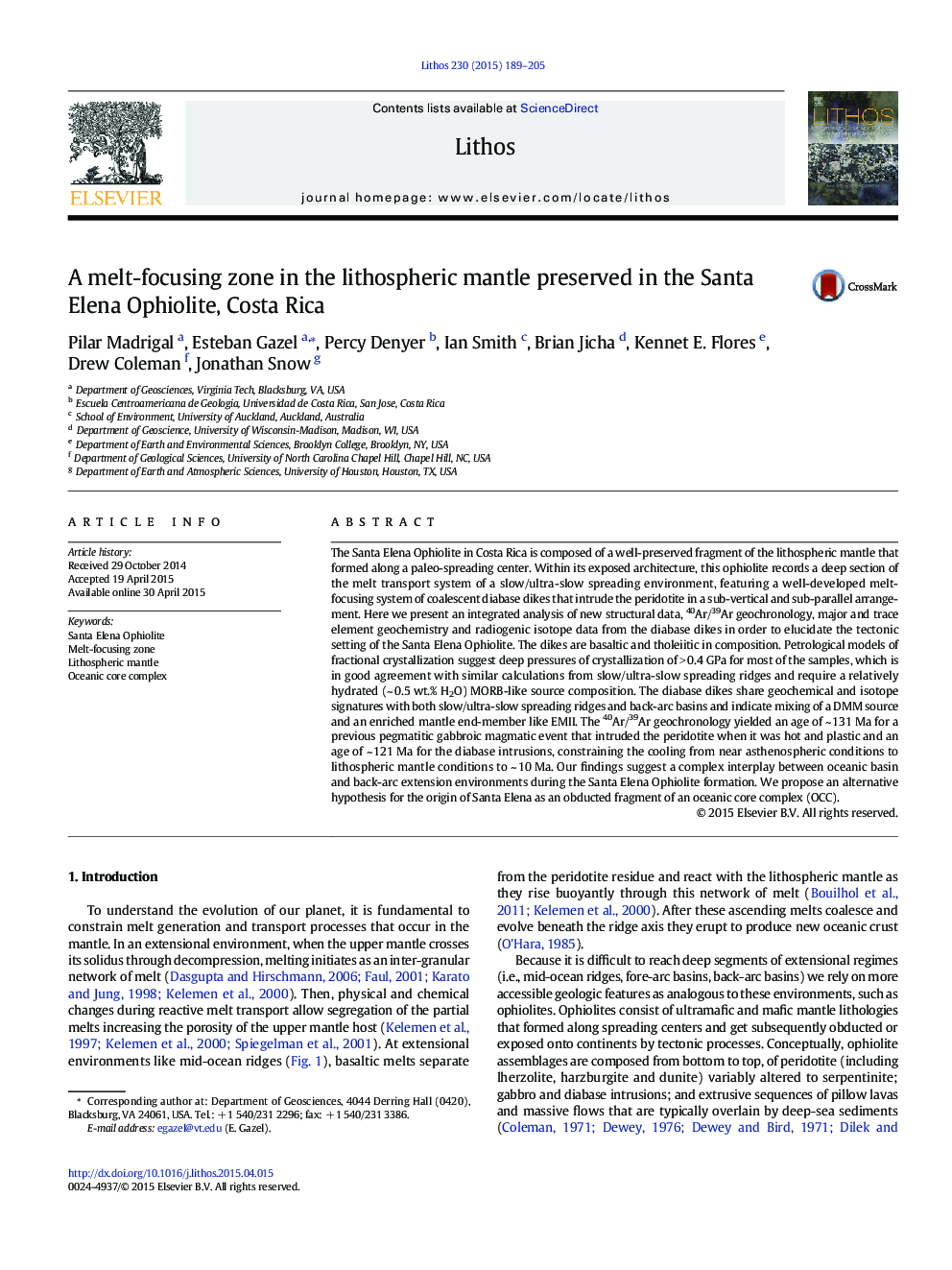| کد مقاله | کد نشریه | سال انتشار | مقاله انگلیسی | نسخه تمام متن |
|---|---|---|---|---|
| 4715679 | 1638661 | 2015 | 17 صفحه PDF | دانلود رایگان |
• Santa Elena Ophiolite is a preserved melt-focusing zone of the lithospheric mantle.
• Its architecture & geochemistry are similar to a slow/ultra-slow spreading system.
• It represents a fossil-fragment of an oceanic core complex from a back-arc basin.
The Santa Elena Ophiolite in Costa Rica is composed of a well-preserved fragment of the lithospheric mantle that formed along a paleo-spreading center. Within its exposed architecture, this ophiolite records a deep section of the melt transport system of a slow/ultra-slow spreading environment, featuring a well-developed melt-focusing system of coalescent diabase dikes that intrude the peridotite in a sub-vertical and sub-parallel arrangement. Here we present an integrated analysis of new structural data, 40Ar/39Ar geochronology, major and trace element geochemistry and radiogenic isotope data from the diabase dikes in order to elucidate the tectonic setting of the Santa Elena Ophiolite. The dikes are basaltic and tholeiitic in composition. Petrological models of fractional crystallization suggest deep pressures of crystallization of > 0.4 GPa for most of the samples, which is in good agreement with similar calculations from slow/ultra-slow spreading ridges and require a relatively hydrated (~ 0.5 wt.% H2O) MORB-like source composition. The diabase dikes share geochemical and isotope signatures with both slow/ultra-slow spreading ridges and back-arc basins and indicate mixing of a DMM source and an enriched mantle end-member like EMII. The 40Ar/39Ar geochronology yielded an age of ~ 131 Ma for a previous pegmatitic gabbroic magmatic event that intruded the peridotite when it was hot and plastic and an age of ~ 121 Ma for the diabase intrusions, constraining the cooling from near asthenospheric conditions to lithospheric mantle conditions to ~ 10 Ma. Our findings suggest a complex interplay between oceanic basin and back-arc extension environments during the Santa Elena Ophiolite formation. We propose an alternative hypothesis for the origin of Santa Elena as an obducted fragment of an oceanic core complex (OCC).
Journal: Lithos - Volume 230, 1 August 2015, Pages 189–205
